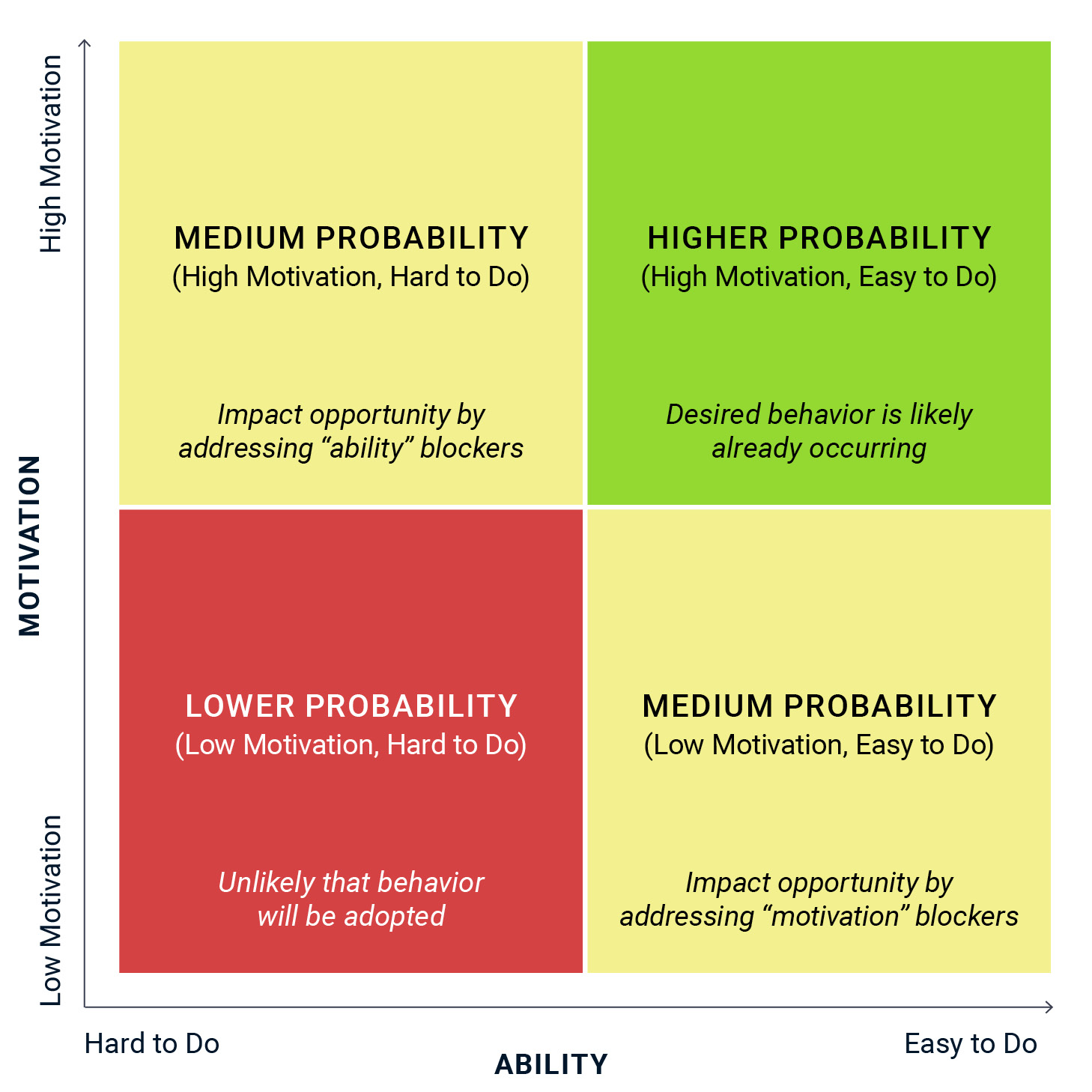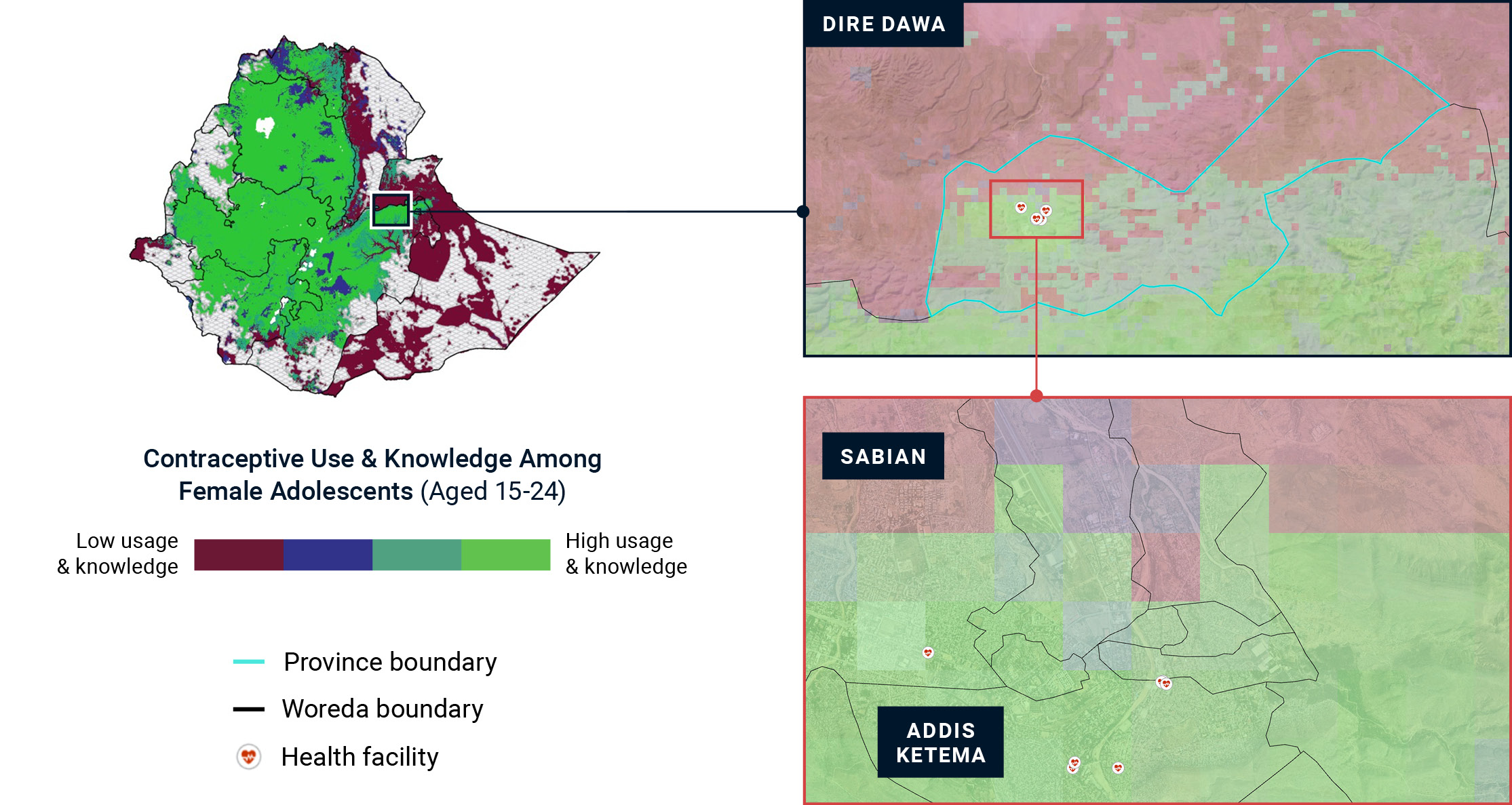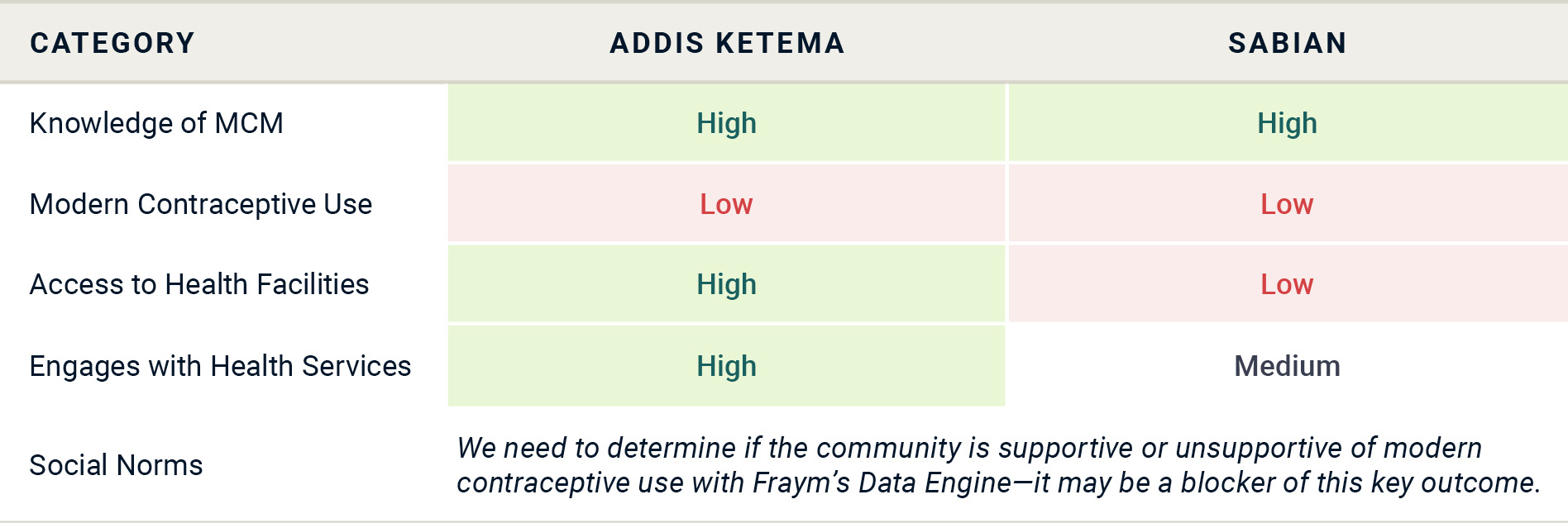How Climate and Gender Vulnerability Intersect in Malawi


Dive into Fraym’s Framework for Measuring and Analyzing Social Norms
Social norms play a significant role in the lives of adolescent girls globally, often blocking their ability to adopt behaviors that could transform the way they participate in and experience the world. Fraym aims to unpack the role of social norms in the adolescent girl’s experience at scale over the next three years to accelerate progress towards closing the gender equality gap.
Specifically, this effort will not only unpack the complex role of social norms in the adolescent (aged 15-24) experience, but it will also translate norms theory into practical insights and action.
Fraym’s approach to this challenge is threefold:
These three steps produce highly actionable measures that are specific to the community context and adolescent experience.
Let’s dive into each step:
Step 1: Classify Adolescents Using FBM
First, Fraym will segment our target population (15-24 year olds) into four discrete groups, based on their motivation and ability to adopt a desired behavior, as outlined in Figure 1:2
Figure 1 – Fogg Behavior Model Segmentation

____________________
1 Agha, Sohail, et al. “Understanding how social norms affect modern contraceptive use.” BMC Public Health. (2021). 21:1061. https://doi.org/10.1186/s12889-021-11110-2
2 The Fraym team will explore several aggregation methods for the motivation and ability indices, such as principal component analysis, exploratory factor analysis, and others.
Step 2: Identify communities as supportive or unsupportive using a battery of validated norms questions
Norms data will add practical nuance to the FBM model in addition to serving as a foundation for independent analysis. In this step, Fraym will classify the environment in which respondents live as supportive or unsupportive for each norm statement based on the proportion of people in the community that they believe practice healthy and empowering behaviors or ascribe to supportive or unsupportive norms and beliefs. In supportive communities, prosocial, healthy, and empowering behaviors and activities for girls and women are considered widespread and desirable.
For example, if a respondent indicates that most adolescent girls and young women have a say in who they marry, we would characterize this as a supportive environment for delaying marriage.
Understanding whether norms co-occur more with motivation, ability, both, or neither, will shed critical light on the potential pathways through which norms might affect behavior. In addition to this FBM analysis and application, norms data also can offer independently useful insights about the social constraints or support systems within which adolescents and young people operate. As such, the Data Engine will provide further insights into norms via composite measures for action.
Figure 2: Comparing Modern Contraceptive Use and Knowledge in Two Ethiopian Communities


Step 3: Pair this data with contextual information about influencers, the community, and media channels for reaching adolescents and other target populations.
Turning these insights into action, Fraym’s Gender Data Engine pairs norms and behavior data with information on pathways to reach critical groups to move the needle on gender equality. For example, we might find that certain rural communities are supportive of condom use, and many adolescents are able to access and use condoms but lack motivation. How would you design an intervention to meet their needs with this new information in mind?
Additional insights generated by the Gender Data Engine identifies the most appropriate media channels to share key reminders and cues to increase the likelihood of adopting a desired behavior or creating a habit in supportive communities.
Follow this series to learn more about our Data Engine and insights in the coming months.
To learn more or connect with the team, email Melissa Persaud at [email protected].